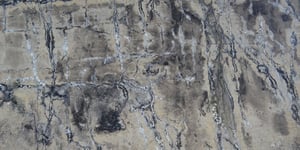
Ticking Time Bomb in Concrete: How to Protect Your Structure from Alkali-Aggregate Reaction
What is the Alkali-Aggregate Reaction?
The alkali-aggregate reaction (AAR) is a harmful chemical process that can occur over time in concrete. In this process, certain components of the concrete react with each other, causing expansion that leads to cracks and ultimately the disintegration of the concrete.
How does the AAR occur?
The AAR is triggered by the interaction of several factors:
- Alkalis in cement: Sodium and potassium compounds in cement react with:
- Reactive aggregates: Certain minerals in the aggregate, such as quartz or feldspars.
- Moisture: Water is necessary for the reaction to occur.
- Formation of expansive gels: Expansive gels form that cause the concrete to swell.
Consequences of the AAR
The AAR can lead to severe structural damage, including:
- Cracking: The expansion of the gels causes cracks to develop in the concrete, compromising its structural integrity.
- Loss of Strength: The formation of cracks reduces the load-bearing capacity of the concrete, increasing the risk of failure.
- Spalling: In severe cases, entire sections of concrete can detach due to the internal pressure exerted by the expansive gels.
Why is the AAR a problem?
The AAR is a gradual process with serious consequences:
- Slow development: Damage often develops over years or decades.
- Difficult to detect: The first signs are often inconspicuous and can be overlooked.
- High repair costs: Repairing affected structures is expensive and time-consuming.
Prevention and Minimization of the AAR
To prevent or minimize the AAR, the following measures can be taken:
- Selection of suitable aggregates: Aggregates with low reactivity should be used.
- Cement with low alkali content: The use of cementitious binders with a lower alkali content can reduce the risk.
- Admixtures: Certain admixtures can inhibit the reaction.
- Monitoring: Regular monitoring of concrete structures allows early detection of damage.
The Influence of Water and Temperature
- Water content: Too much water increases the porosity of the concrete and accelerates the reaction. Too little water can impair strength.
- Temperature: Too rapid drying or high temperatures can increase capillary action and increase the mobility of the alkalis. Accurate temperature monitoring during curing is therefore important.
Conclusion
The alkali-aggregate reaction is a complex phenomenon that can significantly impair the durability of concrete structures. To prevent damage, it is important to understand the causes of the AAR and to take appropriate preventive measures. By carefully selecting materials, optimizing water dosage, and carefully controlling temperature, the risk of AAR can be significantly reduced.
Recommendation
Employing our SONO and TEMO systems enables real-time monitoring of water content and temperature during concrete placement. This proactive approach can significantly postpone, or even eliminate, the need for expensive repairs in the future.
Curious about water content determination or temperature monitoring?
We will present the Vemaventuri solution to you in a 20-minute online demo without any obligation.

